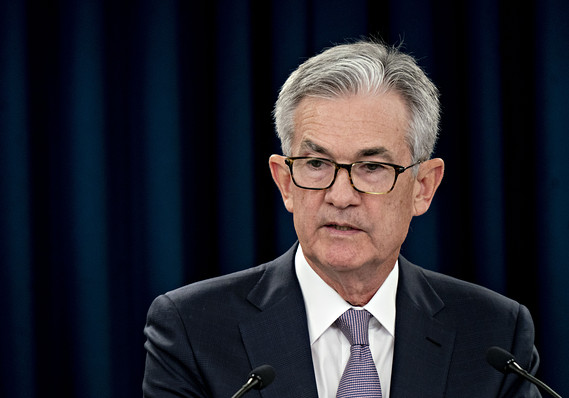 Bloomberg
Bloomberg The Federal Reserve Wednesday lowered its benchmark interest rate by a quarter-point, and expressed an openness to more easing.
In a move to support the economy in a time of greater uncertainty about the outlook, the Fed reduced its benchmark short-term rate to a range between 1.75% and 2%. Wednesday’s cut was the second in two months. Fed officials think a few rate cuts will help the economy weather the uncertainty caused mainly by President Donald Trump’s trade war with China.
There were three dissents from the quarter-point cut, the first time there have been three “no” votes at a Fed meeting since September 2016. Boston Fed President Eric Rosengren and Kansas City Fed President Esther George voted against the move because they wanted the Fed to hold rates steady. They also voted against the Fed’s cut in July. St. Louis Fed President James Bullard dissented because he wanted a more aggressive half-point cut.
At his press conference, Fed Chairman Jerome Powell said the Fed will “act as needed.”
Seven Fed officials said they believed there would be one more rate cut this year.
Roberto Perli, a former Fed staff member and now an analyst at Cornerstone Macro, said he thinks this group includes Powell and other Fed leaders.
“Overall, my expectation for now is that, unless things improve markedly, the Fed will probably skip October before cutting again in December,” Perli said.
Opinion: In a time of Trump, the Fed doesn’t know what’s going to happen next
Powell will have to deal with some reluctance among the 17 members of the Fed committee.
The Fed’s dot-plot projections show five officials believed that this rate cut would be the year’s last. Five more members thought no move was needed after July, including at Wednesday’s meeting.
“Our business contacts around the country have been telling us that uncertainty is weighing on U.S. investment and exports,” Powell told reporters at a briefing.
Powell said the Fed sees a favorable economic outlook, but said there were risks.
“If the economy does turn down, then a more extensive sequence of rate cuts could be appropriate,” he said.
All this was not enough for Trump, who wanted more easing.
Via Twitter, the president said Powell had “no ‘guts,’ no sense, no vision! A terrible communicator.”
Read: Trump blasts Jerome Powell after Fed rate cut
To address the volatility seen in money markets this week, the Fed trimmed the interest rate it pays banks for excess reserves parked at the central bank by 5 basis points to try to keep that rate within the range of the fed funds rate. The interest rate on excess reserves (IOER), will now be set at 1.80%. Financial firms had to pay much higher interest rates for excess reserves over the past two days.
Analysts said that some in the bond market might be disappointed by Powell’s evasiveness about the balance sheet. “At one point, he almost sounded tone-deaf,” Perli said. “Eventually, Powell said that it’s possible that the Fed will have to restart growing the balance sheet sooner than it thought. I would say it’s not only possible — it’s a virtual certainty.”
Stocks SPX, +0.03% DJIA, +0.13% traded lower ahead of the Fed’s decision and deepened that drop in the wake of the announcement but then turned sufficiently upward in the final half-hour of the session to close modestly higher.
Peter Boockvar, chief investment officer at Bleakley Advisory Group, said he saw a likelihood that this might be the last rate cut of the year. “So call this a hawkish cut,” he said.
But others were impressed by the seven officials calling for another rate cut this year.
“The fact that seven dots are calling for another cut means that our call that the next cut isn’t until March is at risk,” said Seth Carpenter, economist at UBS.








